Are you looking for a way to keep your kitchen knives safe and out of reach for small children? If so, you may be wondering if there is a good way to lock up kitchen knives. This blog post will discuss how to lock up kitchen knives. We will also provide tips on how to use these options safely and effectively. Keep reading for more information!
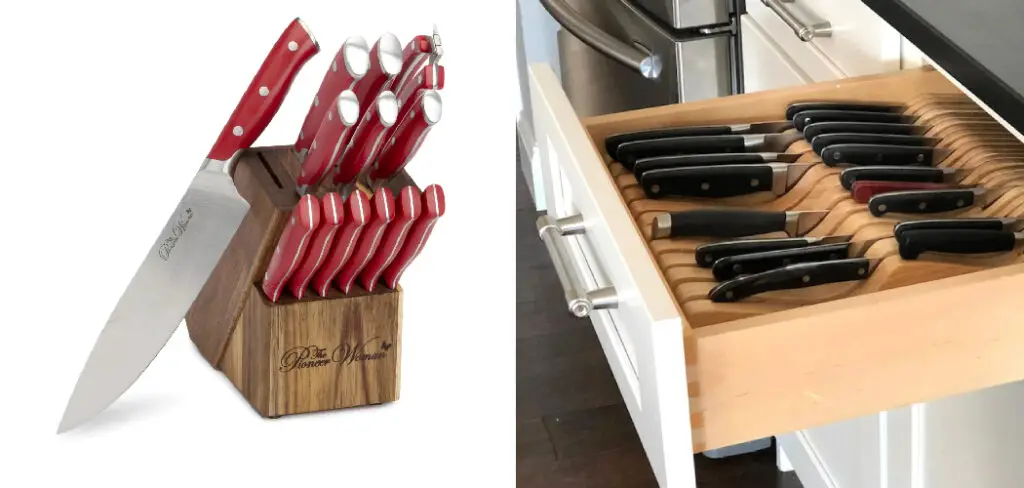
What Causes Kitchen Knife Injuries?
There are a few different things that can cause kitchen knife injuries. First, knives can be very sharp, and if they are not handled properly, they can easily cut someone. Second, if a knife is not stored properly, it can become dull and more difficult to control. Additionally, if a knife is not cleaned properly, it can become a breeding ground for bacteria and other organisms that can cause illness.
Finally, another common cause of kitchen knife injuries is using the wrong knife for the wrong task. For example, using a paring knife to cut through tough meat can cause the blade to slip and cut the user. The other main cause of kitchen knife injuries is simply not paying attention to your actions. Lastly, not following basic safety rules, such as not cutting towards yourself, can also lead to knife injuries.
Why Its Important to Lock Up Kitchen Knives?
There are a few different reasons why it is important to lock up kitchen knives. The first reason is that it can help to prevent accidents. If knives are left out in the open, someone could easily grab one and hurt themselves. Another reason it is important to lock up kitchen knives is that it can help deter thieves. If someone knows that they are locked up, they are less likely to try and steal them.
Also, locking up kitchen knives can help keep them in good condition. If they are not stored properly, they can become dull or damaged. You may want to consider investing in a knife safe if you have expensive knives. This will help to protect your investment and keep your knives in good condition. Finally, it is important to lock up kitchen knives because it shows that you are responsible. If you have children, locking up your knives can show them that you are responsible and that you care about their safety.
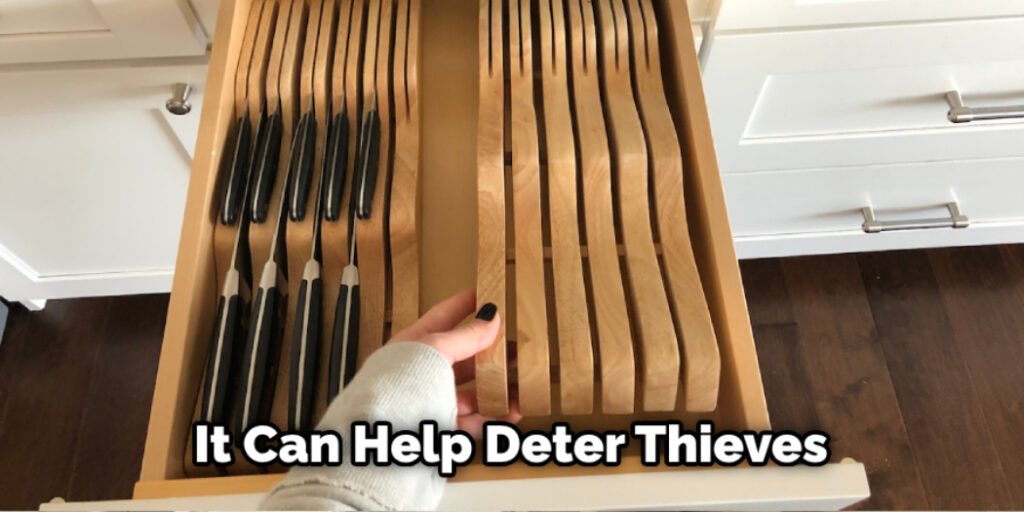
Some Easy Ways How to Lock Up Kitchen Knives
1. Use a Knife Block
The first way you can lock kitchen knives is by using a knife block. Knife blocks are designed to hold and protect knives. They generally have slots for each knife and a weighted base to keep them from tipping over. Knife blocks are a great way to protect your knives and keep them organized. First, identify the slot that best fits your knife to use as a knife block.
Second, insert the knife into the block and ensure it is snug. Third, check to see that the block is stable and will not tip over. Finally, use the knife as normal, taking care when removing it from the block. Avoid pulling the knife out by the blade, as this can cause the knife to slip and cut you.
2. Use a Knife Sheath
Another way to lock up kitchen knives is by using a knife sheath. Knife sheaths are designed to cover and protect the blade of a knife. They can be made out of various materials, such as leather, nylon, or even plastic. First, ensure that the knife is clean and dry to use a knife sheath. Then, insert the blade of the knife into the sheath. Make sure that the sheath fully covers the blade. Finally, use a zip tie or velcro to secure the sheath in place. Avoid using duct tape, as it may damage the knife’s blade.
3. Use a Knife Rack
Another option for locking up kitchen knives is to use a knife rack. Knife racks are a great way to keep your knives stored away safely and securely. Most knife racks have a locking mechanism that will allow you to lock the rack. This is a great option for those with limited kitchen space. First, you will need to find a knife rack that meets your needs. There are many different styles and sizes of knife racks available. Once you have found the perfect knife rack, install it in your kitchen. Make sure to follow the instructions carefully so that you do not damage your knives.
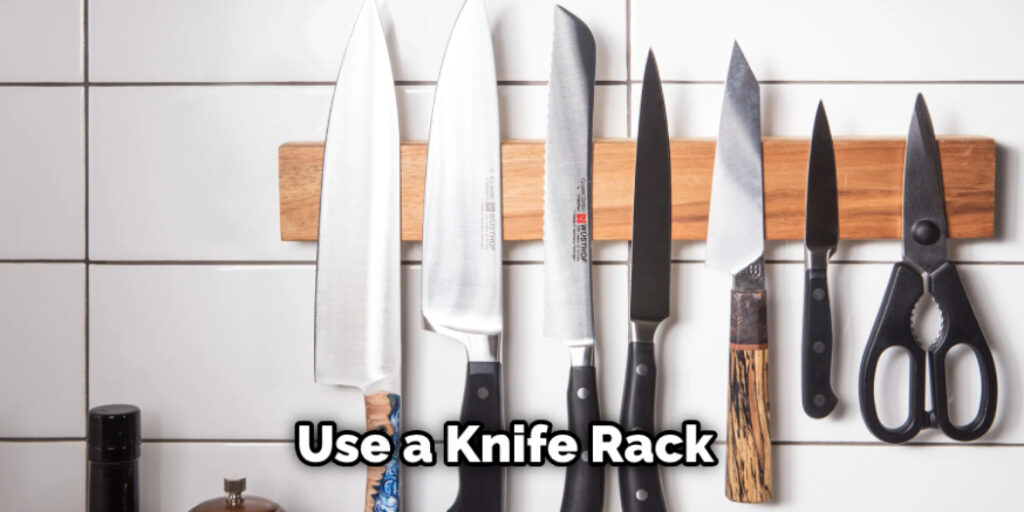
4. Use a Knife Safe
If you have many knives or want to take extra precautions, you can use a knife safely. A knife safe is a storage container with a locking mechanism to keep the knives stored inside from being accessed by anyone who does not have the key or combination. To use a knife safely, place the knives inside the safe and then close the lid. Next, use the key or combination to lock the safe. Once it is locked, the knives will be inaccessible to anyone who does not have the key or combination.
5. Use a Knife Drawer
Another option for locking up kitchen knives is to use a knife drawer. A knife drawer is a specialized drawer with slots or compartments for each knife. This allows you to store the knives in a more organized fashion and keep them from becoming dull. A knife drawer is also a good option if you have small children in the home, as it provides a more secure way to store the knives. If you decide to use a knife drawer, be sure to purchase one that is made of high-quality materials. Otherwise, the knives may become damaged over time. Also, regularly clean the drawer to prevent the knives from becoming dull.
6. Use a Knife Cabinet
If you have a lot of knives or want to lock them up in a more secure way, you can use a knife cabinet. A knife cabinet is similar to a knife drawer but larger and has a locking mechanism. You can usually find knife cabinets at kitchen supply stores or online. First, choose a big enough cabinet to hold all your knives. Then, install the cabinet according to the instructions. Finally, use a key or combination lock to keep the cabinet secure.
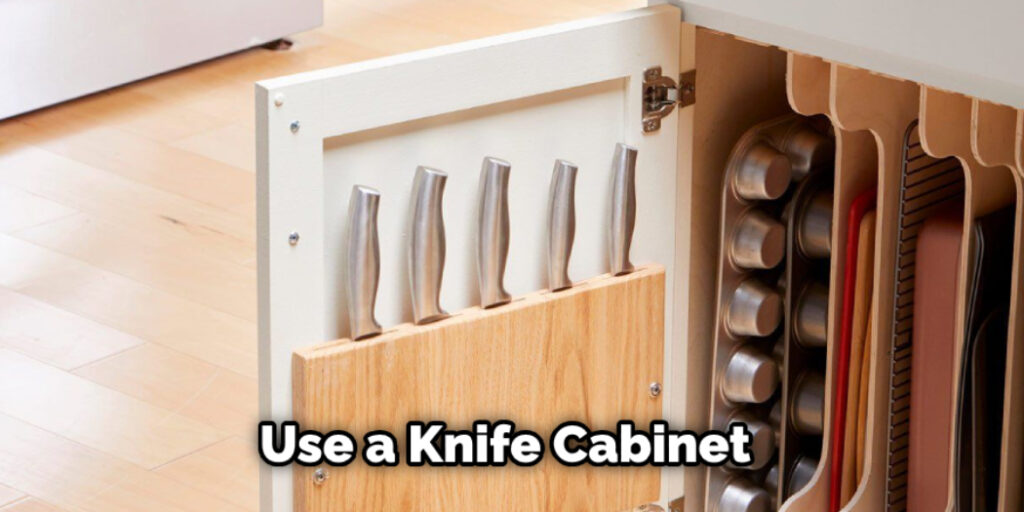
7. Use a Magnetic Knife Strip
A magnetic knife strip is a great way to lock up kitchen knives and keep them within reach. A magnetic knife strip is a strip of metal with magnets embedded in it. You can usually find these strips in the kitchen section of your local home improvement store. To use one, first, make sure that the strip is firmly affixed to a wall or other surface. Then, place your knives on the strip so that the magnets hold the blade. If you have young children in your home, you may want to consider placing the strip out of their reach.
8. Use a Knife Bag
You can use a knife bag if you want to lock up your knives with you when you travel. A knife bag is a specialized bag that is designed to hold knives securely. Knife bags usually have individual pockets for each knife, so you can keep your knives organized and protected. Many knife bags also have a lockable zipper, so you can secure your knives even when you’re on the go. If you frequently travel with your knives, a knife bag is a great option for keeping them safe and secure.
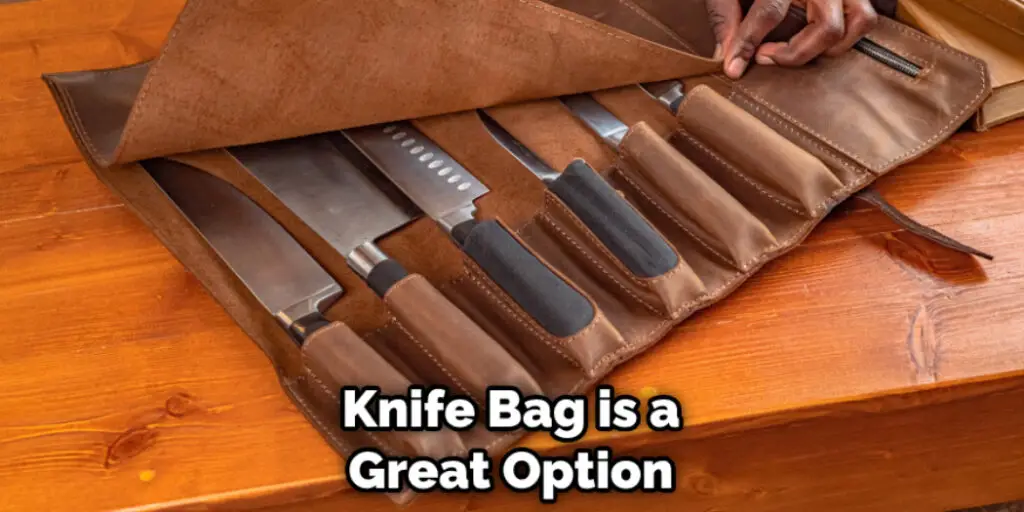
Tips and Warnings on How to Lock Up Kitchen Knives
Tips:
- Be sure to clean your knives regularly to prevent them from becoming dull.
- Store knives in a cool, dry place to prevent them from rusting.
- Always keep knives out of the reach of children.
- Use a knife bag or knife cabinet if you frequently travel with your knives.
Warnings:
- Never try to sharpen a dull knife. This can damage the blade and make it more dangerous to use.
- Do not use your knives to cut through bone or hard objects. This can damage the blade and cause injury.
- Do not place your knives in the dishwasher. The high temperatures can damage the blades.
- Do not try to repair a damaged knife yourself. Always take it to a professional for proper repair.
How Much Does It Cost to Lock Up Kitchen Knives?
The cost of locking kitchen knives varies depending on your chosen method. A knife block or drawer typically costs between $20 and $50. A knife cabinet can cost anywhere from $100 to $500, depending on the size and features. A magnetic knife strip typically costs between $10 and $30. Finally, a knife bag typically costs between $30 and $100.
Conclusion
So there you have it! This is how to lock up kitchen knives and keep them out of the reach of children. Follow the tips and warnings to keep your knives in good condition and prevent accidents. We hope this article was helpful. Thank you for reading!
Professional Focus
Angela Ervin, a former interior designer turned blogger, specializes in kitchen design and renovations. Through her website, she blends her passion for cooking with design expertise, sharing practical and creative ideas. Known for balancing functionality and beauty, Angela’s insightful content has made her a trusted voice in home design and lifestyle.
About the Author
Angela Ervin, an experienced interior designer and blogger, combines her passion for kitchen renovations with storytelling. Living in Petersburg with her family, she enjoys cooking and testing her projects firsthand. Known for her humor and relatable style, Angela shares creative, functional design insights through her content, making her a trusted voice in home design.
Education History
University: Virginia Commonwealth University
Degree: Bachelor of Fine Arts (BFA) in Interior Design
- Angela’s education at VCU focused on mastering core interior design principles, including spatial planning, color theory, materials selection, and sustainable design practices.
- She gained hands-on experience through studio projects and collaborative design exercises, which honed her ability to create functional and aesthetically pleasing environments.
- Her coursework also emphasized problem-solving and practical applications of design, preparing her for real-world projects like her self-directed kitchen renovations.
- The program’s strong foundation in both technical skills and creative expression shaped Angela’s ability to seamlessly integrate form and function in her work.


